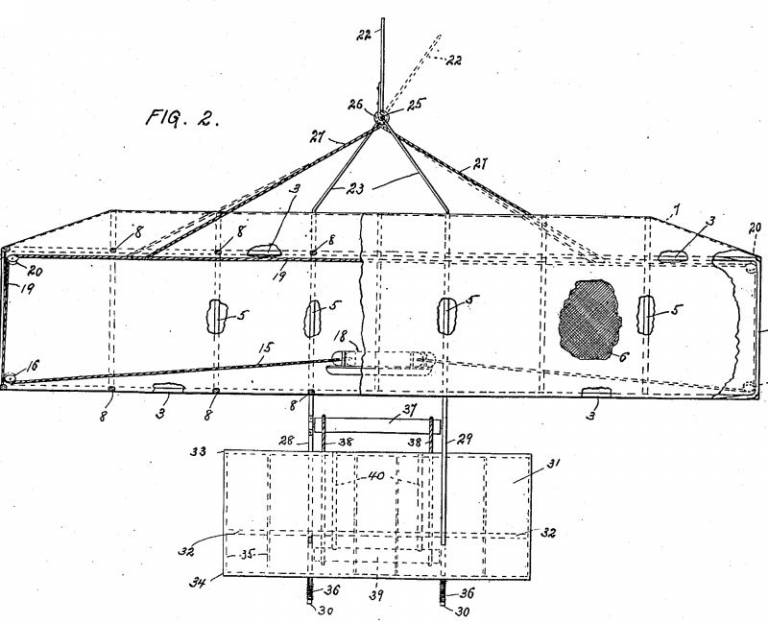Myth 1 - The Wright Brothers’ patent retarded early US aviation development
This post exposes the myth that the Wright Brothers’ patent retarded early US aviation development.

13 March 2019
The Myth
The myth is that threats of suit under the Wright brother’s patent retarded US aviation development so that the government was forced to create a patent-licensing arrangement to restore supply of aircraft in time for World War One (WW1). A principal source for the myth is a 1933 Court of Claims decision that made these 'special findings of fact'.
'During and prior to January 1917, the development of the aircraft industry in the United States was seriously retarded by the existence of a chaotic situation concerning the validity and ownership of important aeronautical patents…. [on] January 13, 1917, the Secretary of the Navy reported [that] …it was difficult for the Government to obtain fulfillment of orders because some companies would not expend any money on their plants for fear that suits brought against them would force them out of business; that to protect themselves in case they were forced to pay large license fees the companies had greatly increased the sales prices of their products to the Government' (our emphasis).[1]
The myth is often used to illustrate the general 'policy lesson' that government intervention in property rights can be necessary to obtain the optimal outcome; Heller finds that '[w]e have air travel because of legal luck and political will.'[2] 'Retellings' for a mass-audience have been notable for publicising error and unwarranted leaps of association, such as Goldstone, 'Patent law remains [today] the damper on innovation that it was when airplane development was nearly grounded in its infancy.'
The Facts from Ron Katznelson and John Howells
The Wright brothers licensed their patent early and with vigor into all developed markets. When they won their suit against the principal US infringer of their patent in 1914, Glenn Curtiss, they never enjoined Curtiss’ manufacturing activities, leaving him free of royalty payments and able to develop what became the leading US aviation business.
The major source of aircraft demand in this period was military demand derived from prospective or actual participation in WW1. Under a 1910 law,[3] and subsequent case law, it was not possible to sue for infringement a supplier to the US government of patented goods – instead, compensation from the government for lost royalties could be sought in the Court of Claims. So contrary to the 'findings of fact' quoted above, it was not possible that investments to supply the government could be deterred 'for fear' of suits. Indeed, the evidence shows that no patent hold-up or development suppression occurred before the government forced patentees into its preferred-licensing agreement. By end-1916 the US military had over 300 aircraft on order from twelve US manufacturers; production of aircraft and aircraft patenting both rose exponentially from the affirmation of the Wright brothers’ court victory in 1914 through 1917 and public announcements of investments in US aeronautics showed an increasing rate through 1916 into 1917.[4]
The ultimate origin of this century-old myth are two factually unsupported letters written in January 1917 by the US Acting Secretary of the Navy and the Acting Secretary of War to Dr Walcott, chairman of the National Advisory Committee on Aeronautics (NACA). The manufactured allegations of blocked development in these letters were used to persuade the President and Congress to authorize the appropriation of aviation patents at depressed royalty rates. The motivation of government actors was expressed as follows; 'any adequate return to the Wright stockholders upon their investment [in the Wright patent] must be through the manufacture and sale of airplanes ...any return from patents must necessarily fade into insignificance.'[5] These criteria were built into the government cross-licensing arrangement into which aircraft suppliers to the government were coerced: royalties to the Wright patent holder were depressed to the extraordinarily low rate of 1% - at a time when Congress recognized in the 1917 ‘Trading with the Enemy Act’ that 5% was a fair royalty to pay for a single patent owned by enemies of the US.
(Find fuller discussion here.)
Conclusion
The Wright brothers’ patent did not retard US aviation development and the 'patent logjam' was an invention of government actors. The myth has blinded scholars to the possibility that the design and coercive implementation of the aircraft patent pool was an abuse of the government’s monopsony power that from 1917 effectively ended the development-incentive provided by aviation patents. Further research should investigate.
[1] Mfrs. Aircraft Ass'n, Inc. v. U.S., 77 Ct. Cl. 481 (1933) at 483-484; [2] Heller, Michael, (2008), Gridlock Economy, Basic Books: New York, NY, 31. [3] Public Law 61-305, Ch. 423, 36 Stat. 851, (June 25, 1910); [4] (2015), 'The Myth of the Early Aviation Patent Logjam - How the U.S. Government Commandeered Pioneer Patents', Industrial and Corporate Change, 24, (1), 14, 13, 17. [5] NACA, 1917, ‘Minutes of Executive Committee,’ Feb. 3, 4. Cited in Katznelson and Howells, 2015, p28.
 Close
Close

